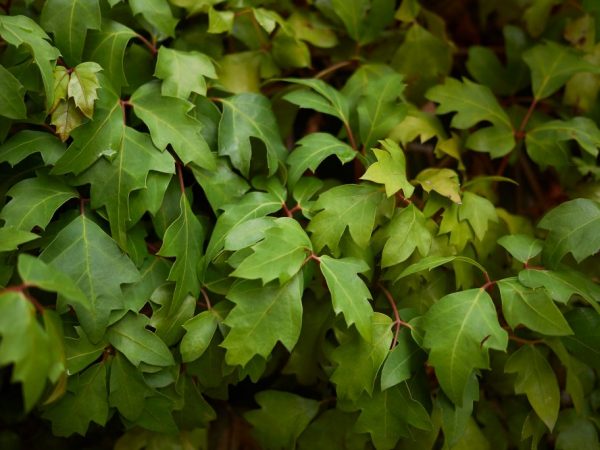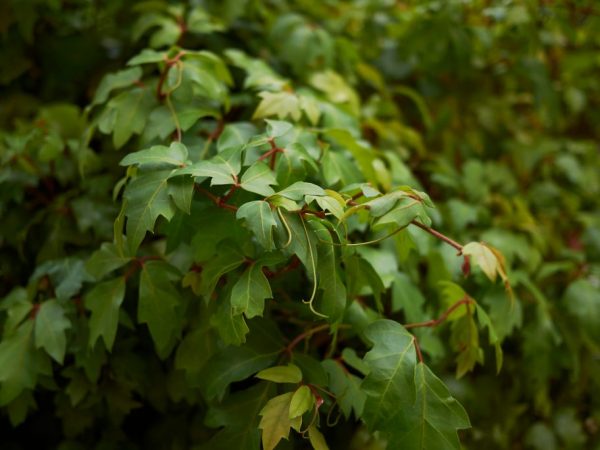Features of growing indoor grapes
Indoor grapes (Cissus or Tetrastigma Vuagnier) are a common, easy-to-maintain plant. It cleans the air well and is grown as an ornamental one.

Features of growing indoor grapes
Characteristics of grapes
Indoor grapes can do without watering for a long time. It is resistant to low temperatures.
Cissus is fruitless, but it grows quickly, has an abundance of foliage and has a strong antennae. It has a thin stem that resembles a vine. As it grows, new thin shoots appear, thanks to which the plant is flexible. Antennae have a spiral shape. They easily cling to special supports.
The leaves are similar in shape to birch, but denser. Thanks to this feature, the plant received a second name - "Birch".
Indoor grapes have small flowers, collected in umbrellas. It rarely blooms.
Growing features
For growing indoor grapes, it is better to choose the western or eastern side of the room. In the northern part of the house, it grows only with the right artificial light. If the flower is on a south-facing window, it is protected from direct sunlight.
Landing in the soil
Indoor grapes are propagated at home in spring or early summer. At this time, new shoots appear.
Breeding scheme:
- On the lateral shoots, cuttings are cut, the length of which is up to 20 cm. Each cutting should have a part of the main shoot.
- All the lower leaves are cut from the cuttings. After that, they are dipped in a solution with growth hormones.
- A small pot is filled with a special mixture. Up to 5 seedlings are planted in one container.
- Cover the pot with plastic wrap. The plant needs a greenhouse effect to grow quickly.
The seedlings should be in a well-lit, warm place. If new shoots grow on them, the flower has taken root, so the film is removed.
Plant care
Indoor grapes are thermophilic. The optimum temperature for its proper growth is 15-18 ° C. Spraying and a warm shower have a beneficial effect on the development of culture. They are held no more than once a week.
Indoor grapes need enough light. At home, the lighting should be diffused, but bright. It is better to choose a lighted place, but without direct sunlight. Cissus develops slowly in the shade.
Fertilizer
Indoor grapes are a plant that needs proper nutrition. It is better to fertilize it during the period of active growth, once every 2 weeks in spring and summer. For feeding, a complex fertilizer is used, intended for different types of plants.
Top dressing should contain a maximum of vitamins and minerals. In winter, fertilization is not necessary, because the flower is dormant.
Watering

The plant needs to be watered with settled water.
The greater the mass of the foliage, the more water the plant requires, since the moisture evaporates quickly. In spring and summer, watering should be as abundant and frequent as possible. It is made with soft warm water. Tap water is defended.
In autumn and winter, the amount of watering is reduced. Their goal is to ensure the vital activity of the root system.
Excess moisture also negatively affects cissus - water stagnation in the pot should not be allowed.
In the fall, watering is carried out 1-2 times a week, but sprayed twice a day, since at this time of the year the air is dry.
Diseases and pests
If cissus is properly cared for at home, the plant is resistant to diseases and pests.
Due to excess moisture, root rot appears, as a result of which the foliage falls off. If this happens, watering is stopped. The next step is to transplant the plant.
Sometimes grapes are attacked by scale insects. It appears due to too high room temperature or dry air.
If the leaves change shape, become concave or convex, the cissus needs more frequent spraying.
If the air is too dry, the foliage turns yellow and begins to dry out at the ends.
A pale color indicates a lack of trace elements.
If the cissus grows too slowly, it is fertilized.
Aphids or spider mites sometimes appear on the leaves. Because of this, the leaves curl, dry and fall off. The most effective pest control method is chemical treatment with special preparations to avoid damage and burns to the leaves.
Prophylaxis
Growing indoor grapes requires proper care. To avoid attack by pests or the development of diseases, it is important to provide the grapes with the necessary conditions. This involves ensuring the optimal temperature, proper watering and lighting.
Conclusion
Cissus does not require much maintenance - it is often grown in offices and educational institutions.


